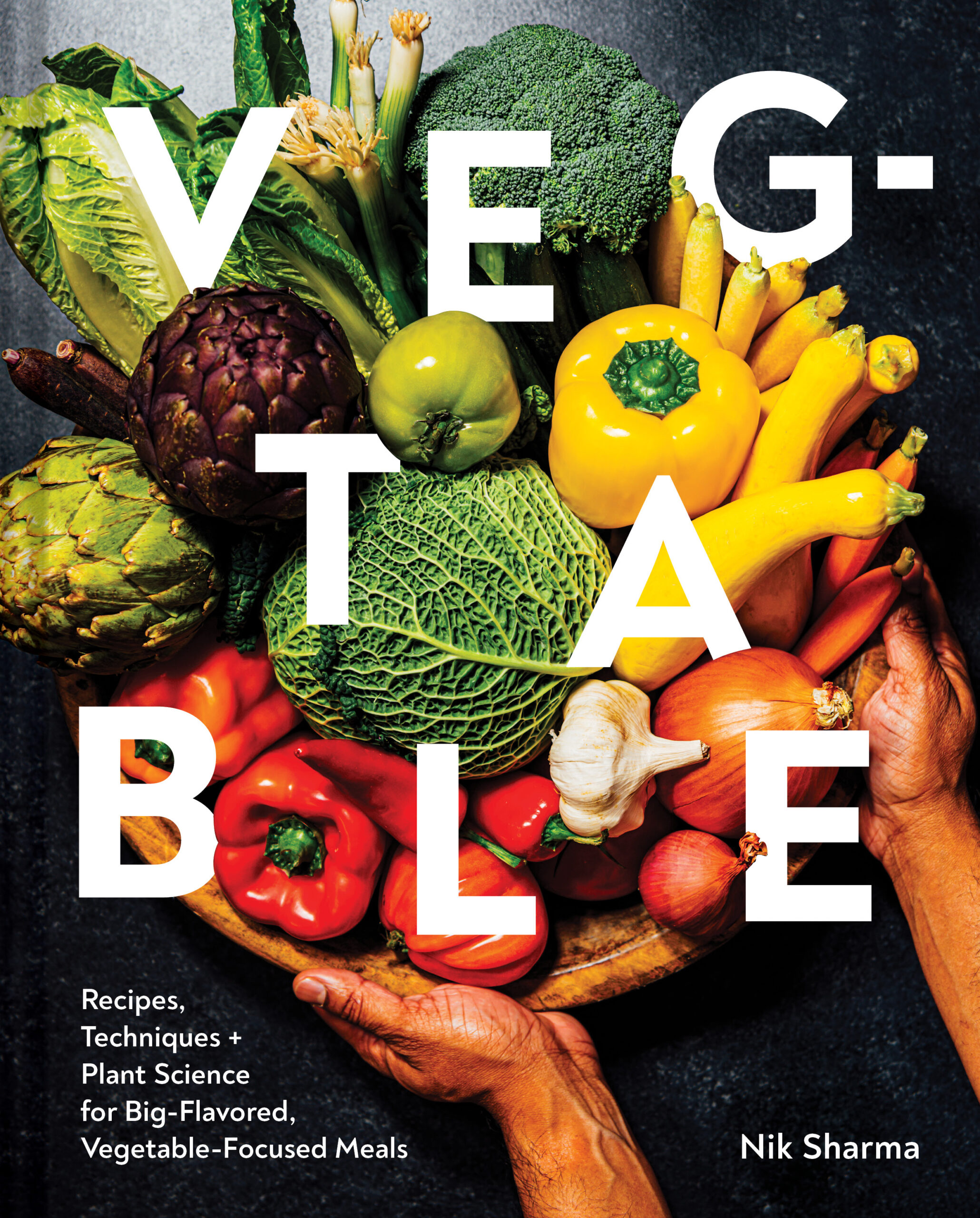
When it comes to fermented dairy-based marinades I can sing praises of them all day long. When I cook turkey for Thanksgiving and want to use a wet brine, this is the method I always turn to. This is a good recipe to keep on hand that you can easily tweak to work in other spices and flavors and make it your own. This method will work for any type of poultry, just adjust quantities of the marinade to the size of the bird.
Read more about the science of Wet Brining Poultry and learn how Yogurt Marinades work on meat.
Print
Golden Garlic Roast Turkey
5 Stars 4 Stars 3 Stars 2 Stars 1 Star
No reviews
This is my easy version of a roast turkey that’s highly unfussy. The turkey is brined in a mixture of kefir that contains lots of garlic and turmeric, which gives it a wonderful fragrance and color. The brined turkey is then brushed with olive oil, coriander, and pepper before being roasted slowly at a very low temperature in the oven. The result is a juicy, tender, and flavorful bird.
Ingredients
3 qt/2.8 L plain unsweetened kefir or buttermilk
¼ cup + 2 Tbsp fine sea salt
12 garlic cloves (about 1 whole head of garlic)
4 Tbsp ground turmeric
One 9 to 10 lb/4 to 4.5 kg turkey
¼ cup/60 ml extra-virgin olive oil
2 Tbsp ground coriander
½ Tbsp ground black pepper
2 cups/480 ml water
Instructions
- Pat the turkey dry with clean paper towels, remove the gizzard and giblets (I’m going to refer to these as turkey parts), reserve in a ziptop bag, and freeze them to make the gravy (recipe follows).
- Place 1 qt/960 ml of the kefir in a blender along with the salt, garlic cloves, and turmeric. Pulse on high speed for a few seconds until the garlic is completely obliterated, the mixture is smooth, and the salt is dissolved. Pour the liquid into a large brining bag (aka turkey-size oven bag), pour in the remaining kefir, and stir to combine. Place the turkey in the bag, squeeze out as much air as possible, and tie the bag up (a food vacuum sealing device and a large vacuum bag are great for this). Gently shake the bag to coat the turkey in the brine and leave it on a large plate or tray in the refrigerator to brine for at least 24 hours, preferably 48 hours. Shake the contents of the bag and flip it over every 6 to 8 hours. Some of the turmeric will settle as the brine sits, this helps redistribute the brine and the turmeric.
- When ready to roast the turkey, preheat the oven to 200F/95C.
- Use a roasting pan with a wire rack or a rectangular 13 in by 18 in by 2 in/33 cm by 46 cm by 5cm baking pan. If using the rectangular baking pan, place 4 small ramekin bowls near the four corners of the pan. Place a wire rack on top of the ramekin bowls.
- Drain and discard the brine in the bag. Place the turkey in a large bowl and drain and brush off as much liquid as you can get off the turkey, there’s no need to overdo this. Place the turkey breast-side down on a cutting board and using a pair of kitchen shears cut the turkey across the length of the backbone and continue until the turkey is cut all the way from the tail end to the neck. Flip the bird over the cutting board to splay out the legs. Take both your hands and place them on top of the breastbone and press down till you hear the bones crack and the bird lays out flat. Oddly enough it feels like performing CPR. Place the flattened bird cut-side down on the wire rack. Cut out the backbone and add it to the ziptop bag with the turkey parts.
- In a small mixing bowl, mix the olive oil, coriander, and black pepper. Brush the mixture all over the bird either with your hands or a brush (a silicone brush is much more efficient).
- Cover the tips of the wings and the exposed bones at the end of the legs with a layer of foil. This reduces the risk of charring.
- Pour the water into the pan and place the pan in the preheated oven. Cook until the skin turns golden brown and crisp, the internal temperature of the breasts reaches 150/65C and the thighs reach 165F/74C, for 4 to 4 ½ hours. Rotate the pan halfway through every hour to ensure even browning.
- Once the bird is roasted, remove the pan from the oven, tent, cover with foil, and let rest for 10 minutes before cutting and serving. Transfer the turkey to a cutting board. Cut the turkey and serve with gravy (recipe follows) and my extra citrusy cranberry sauce.
Notes
- You don’t need a special roasting pan, I rigged a sturdy high-sided baking pan with 4 ramekin bowls to support the weight of the turkey while it sat on the wire rack and it worked lovely. (My regular roasting pan is wrapped up in a box sitting in the garage as we’re currently undergoing a home renovation). To learn how wet brining works read all about it in The Science of Wet Brining Poultry.
- To collect the drippings in the pan for gravy, pour 1 cup/240 ml of boiling water on the pan and scrape the pan with a wooden spoon or silicone spatula to extract as much of the solids as possible. Transfer the liquid with any solids to a bowl or measuring cup.
- I’ve used a turkey that’s large enough to feed 8 people. However, for smaller families and groups of people, you’ll have enough leftover turkey for a second meal during the week.
- I like to spatchcock/butterfly the turkey after brining rather than before. I find it makes the bird easier to handle and also fits in the brining bag. If prefer to spatchcock first and then brine, you can. If you’d rather roast the bird whole and not spatchcock that will work too, just adjust your cooking time accordingly.
- You can use either kefir or buttermilk to prepare the brine. My favorite brands for kefir are Lifeway and Green Valley Creamery, their consistency is not excessively thick unlike some of the other brands.
- I’ve roasted turkeys that were brined for 24, 36, and 48 hours brining times. The turkey brined for 48 hours produced the best results in terms of juiciness and texture.
- I cover the wingtips and the exposed bone of each leg with a small piece of foil (like a pair of socks). There’s little to no meat at these ends and they easily burn. Covering them in foil reduces the risk of burning, it’s similar to the trick that pie makers do when baking pie crusts (they cover the edge of the pie crust with foil to avoid them from burning).

Place foil “socks” over your turkey’s leg and wing tips to prevent them from burning out during roasting. - The water in the pan helps provide humidity in the oven just like a steam oven.
- The low cooking temperature and water in the pan eliminate the need to baste the turkey as it cooks.
- Author: Nik Sharma


Golden Turkey Gravy
5 Stars 4 Stars 3 Stars 2 Stars 1 Star
No reviews
This recipe is originally based on the method by Kenji López-Alt’s recipe at Serious Eats. I’ve used it for a long time to make chicken and turkey gravies.
Ingredients
2 Tbsp extra-virgin olive oil
1 large/about 300 g white or yellow onion, diced
2 large/150 g carrots, diced
2 medium/about 100 g celery sticks, diced
4 large sprigs of thyme
½ tsp ground turmeric
½ tsp ground black pepper
Turkey gizzard and other parts
1 cup/240 ml pan drippings (see the recipe above)
6 cups/1.4 L low-sodium chicken stock or [6 cups/1.4 L water + 2 Tbsp Better Than Bouillon’s Reduced Sodium Roasted Chicken Base] (See The Cook’s Notes)
2 Tbsp unsalted butter
¼ cup/35g all-purpose flour
Instructions
- Heat the olive oil in a large saucepan over medium-high heat. Add the onions and sauté until translucent, 4 to 5 minutes. Add the carrots and celery and sauté until tender, 5 to 6 minutes. Add the thyme, turmeric, and pepper, and sauté until fragrant, 30 to 45 seconds. Add the gizzard and turkey parts, stir in the pan drippings and stock, bring to a boil over high heat, reduce heat to low, and simmer until the liquid reduces to 5 cups/1.2 L, 30 to 40 minutes. Remove from the heat and carefully strain the broth through a fine-mesh sieve (for a clearer-looking gravy, strain through a sieve lined with cheesecloth) held over a large heatproof bowl or jug. Don’t press the solids left behind in the sieve, instead shake the sieve to drain and collect as much liquid as possible and discard the solids. Skim and discard the fat that accumulates at the surface.
- Wash and wipe the saucepan down. Heat the saucepan over medium heat and add the butter; cook until the butter melts completely. Stir in the flour and cook until the flour turns a light golden brown, 1 ½ to 2 minutes. Pour in 1 cup/240 ml of the strained broth and whisk until smooth. Whisk in the second cup of broth and whisk until smooth and free from lumps. Whisk in the remaining broth and cook the liquid over medium-high heat until thickened; the final volume of the gravy will be approximately 4 ½ cups/1 L. Taste and season with salt if needed. Serve warm.
Notes
- This is a question that comes up often, are the pan drippings too salty to make a gravy. The short answer is no. Almost all the brine is discarded and rubbed off before the turkey goes into the oven.
- See the roast turkey recipe (recipe above) to collect the pan drippings. You can also deglaze the pan with a dry white wine such as Chardonnay, Pinot Gris, or Sauvignon Blanc. It’s best to do that while the pan is still very hot. You can warm the wine up in a saucepan to deglaze the pan if the pan cools off quickly. The heat helps extract as much fat as well as any solids stuck to the pan.
- I really love the taste of Better Than Bouillon’s Reduced Sodium Roasted Chicken Base here; it’s much more flavorful and circumvents the need to add any other ingredients to build the savoriness of the stock.
- Author: Nik Sharma

